Note from the future (25.05.15): Since we published this interview, Simon has started his own newsletter. Check it out!
Welcome to The New Canadiana, a new series which will feature interviews with Canadian singers and songwriters. The New Canadiana is a line of inquiry: what is the shape of the soul of Canadian folk and country music right now? This experiment arises out of my own return to writing and releasing folk music in the past year. Is there a movement or a larger body of work—some sort of spirit—that I can participate in?
In 2025 we will meet 12 different songwriters. Our focus will be on artists with smaller followings. These are artists who we can be sure make music simply because they must, because it is in their nature to do so.
This playlist will document our discoveries along the way. I encourage you all to save it and start listening now. It will give you a chance to become familiar with some of the characters we will meet in the series. Sitting at the number 2 position, for example, there is a wonderful song by a very good friend of mine who is our guest for today.
If you’re not already, be sure to subscribe to the newsletter so you don’t miss out on future editions of what I expect will be a delightful journey.
Simon Bridgefoot (Vancounver, BC)
Simon has been making music for over 20 years. 18 years ago he and I started writing songs together over lunch breaks at our high school in Chilliwack, BC. I think we played in at least three different bands together—the Matthew Joel Band, Jordan Klassen’s touring band, and for one special night in Vancouver, with Teen Daze. We were even roommates for a time in the Abbotsford, BC community living project called the Atangard.
Simon lives in Vancouver now where he studies Chinese medicine and works as a well-respected DJ. In recent years, Simon has gained a reputation as a producer and mixer of astonishing vision, contributing his painterly vision to albums by Warm Amps and Kristin Witko.
In 2023 Simon released a precious collection of folk songs called 3. The songs are a journey of soul into depth and back again that showcase Simon’s experience both as a songwriter and a producer. I was very glad to get Simon on the phone recently to talk about his creative process.
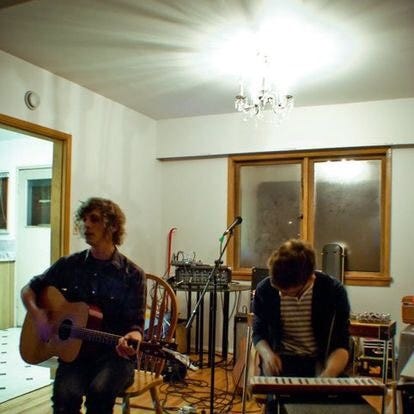
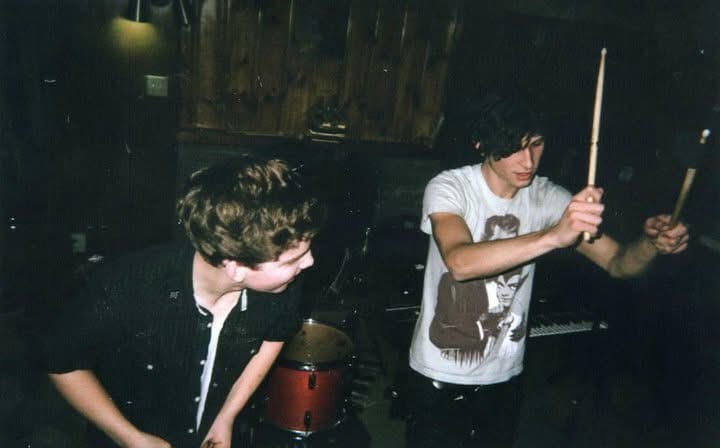

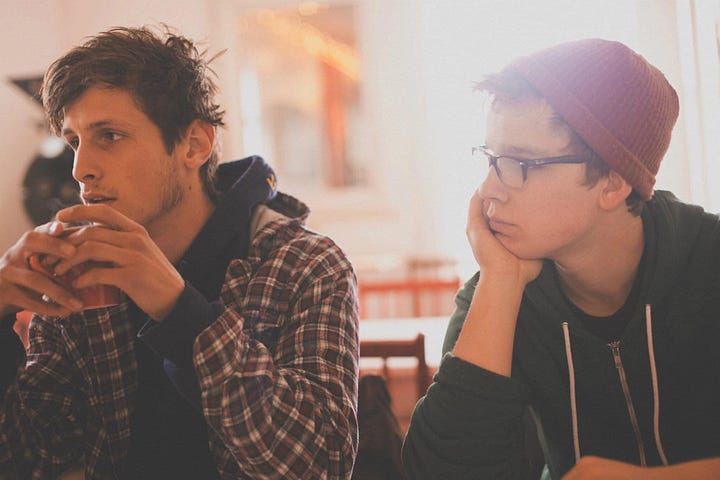
The Interview: Inspiration and the Creative Process
Matthew: Tell me a bit about how these three songs came to be.
Simon: It was summer break and I was feeling some fatigue—feeling like I really need to do something for myself. I still had the studio space above O’Neil’s [Racoon Moon Studio]. I always thought I would have used it more than I did, and I mostly ended up using it for other people and didn’t work on my own music that much there. At the time I was going through a sort of reclamation of myself, and it felt like this wonderful gift to give myself to go take 3 weeks where I can just completely get into an artistic focus. I had this feeling like “this is the end”: the end of Atangard, the end of the studio, and things are falling apart, and I have this window to do this thing for myself and I’m going to take it.
I had all these songs and demos that I had worked on over the years—I still have folders and folders of ideas—and I thought, I’ll just start working on these ideas. But I ended up not working on anything that I had made before. These three songs all just sort of came out of that time.
You know how you get this feeling there’s a song coming on? Like, here it comes, it’s time to make it.
Matthew: Julia Cameron compares inspiration to water condensing on the ceiling of a cave. It gathers there slowly and then all of a sudden is ready to drip onto the page. You just have to be ready to catch it. It’s like you can feel the humidity changing and you know that something’s about to happen.
Simon: Oh yeah, that’s one of the best feelings.
A Conversation with an Archetypal Image
Matthew: I’ve always really loved the way your songs tend to meditate on a single image or idea that gets turned over and over. Track two, “In Sand”, might be my favourite example of that. What did you discover about sand when you were writing this song? What role did Sand, like, with a capital “S”, play in the writing of this song?
Simon: Well first off, it’s really cool to get that perspective. It’s very mysterious for me. I don’t know. Sometimes, when I write a poem, I really want to encapsulate something—there’s a feeling or an image and I want it to be clear and communicated. But with this it just sort of started with the chords. I was listening to the newest Alex G album a lot, and I really like how simple and vulnerable but almost cryptic it can be. The first lyrics just came: “I feel like I’m in sand, hard to walk in but still soft in my hand,” and I thought, “wow, where did that come from,” you know? It was just like, here’s the line coming onto these chords, and that is a great start. Now I just have to do service to this great start. [Laughs]
I didn’t write the bridge section until a little while later, but again, it all just came from an inspiration like a geyser and sort of wrote itself. There is a departure from the sand image, but then there was the metaphor of falling into an ocean. And then I thought, great I’m back in the ocean and what do you know, the ocean has a relationship to sand. It was this wonderful opportunity to bring it back. So I thought, well, “the earth and the sea are joined in Union in Sand,” and I thought, “wow, how wonderful to be able to come across such a pot of gold.”
Matthew: For me, that last line is a deeply revelatory moment in the song. It’s like Sand itself shows up and discloses something of its secret.
In the bridge the song switches to the second person. Who is it addressing?
Simon: I guess I’m speaking to myself. I also hope that this might help someone else. It’s about trying to accept that you’re falling. You’re in the dark. Quit telling yourself that something is holding you. You’re not being held. You’re in this moment of loss. Be honest about it. But in the honesty, then you are caught.
I had had this powerful dream where there was a lion cub who was caught in a fence, and I was trying to help it. I got it out of the fence and was consoling it, and I kept saying “It’s okay, it’s okay.” But then its mother showed up, and she sort of grabbed me and put me on her belly and like laid me there and said “Don’t say that it’s okay. Say, ‘let the wave of grief wash over you and know that you can fall into an ocean of love.’” And then I woke up and I was like, hell yeah, that’s great advice. [Laughs]
Matthew: [Laughs] Great advice, yeah.
Simon: That’s what I wanted to get across. Don’t tell yourself it’s okay. I think that’s how I’ve conceptualized what faith means. Faith is really letting go. It’s such an egoic response to trust in something because you’re afraid. But it’s different to trust that something beyond your comprehension is going in a direction or is there and will catch you. There’s trust in both cases, but it’s a different disposition. I really wanted to get this across: “You don’t have this, admit defeat, and then find true success.” From that point, there is this linear ascent. You’re in this ocean of love and everything’s being brought back up to speed and you’re reintegration is happening. Then what do you know? Here we are, we’re back in the sand again. We’re back on the earth.
So, I guess I don’t really know what I want to say about sand besides whatever came out in the song. [Laughs]
Matthew: Words, in the end, are images and can’t be exhausted by explanations. They just have to be.
Simon: In the Jungian dream interpretation tradition, whenever you’re on a beach or you’re close to the water they always say the water is the collective unconscious, like the oceanic unconscious. So sand is in between the deep and grounded home.
Matthew: Mmmm. It’s an encounter that makes hard rocks soft.
On the Relationship between Folk and Electronic Music
Matthew: For me, these three songs are such a rich contribution to this thing I’m calling The New Canadiana—they are such beautiful folk songs. But they also have electronic elements. “Peace”, for example, has a gentle four-on-floor pulse. You’ve also made a lot of electronic music in your life, and when I think of you as an artist, I like to think of your laptop as one of your most expressive and accomplished tools. What is the relationship between folk music and electronic music for you?
Simon: [Laughs] I would say I have this level of cringe to the idea of the genre “folktronica”. There’s all of these people in British Columbia, like real hippie folks, who really relate to folk music and are into nature and stuff, but they’re also really into Forest Raves and dubstep and dreadlocks. There’s this Venn diagram between folk and electronic music here specifically that elicits this cringe response for me.
Matthew: [Laughs] I think I know what you mean.
Simon: Usually this kind of response means something about my own shadow. It probably just really resonates with what or who I am. I do exist in the intersection between folk and electronic music, and I feel really preoccupied by not doing what a lot of music in that intersection ends up doing. So I think the question that you’re asking initially elicits this avoidance response, like I don’t even want to acknowledge that there’s an intersection. But you’re right. Maybe answering this question can be an exercise for me in addressing what I’m trying to avoid. [Laughs]
When I work on a song, sometimes an idea for a sound will occur to me, and then the mission is to try and get as close to what’s in my imagination as possible. You might write a song on a traditional instrument, but you get this impulse, this creative idea that comes. I think Madeline L’Engle says that the artist’s job is to incarnate something. You’re trying to be obedient to what the spirit that visited you wants. I guess I feel like I’m in service to the idea, so if I start on a traditional instrument, but the idea pulls the song away from the traditional instrument, I’m going to follow that.
Matthew: So you’re striving after an idea that doesn’t have a body and you’re trying to give it a body, but to do so you have to be obedient to the idea and try to fix your vision there.
There’s something so painterly about your music to my ear, something about how you use production as a creative tool. Now I’m imagining you at your laptop, getting these guitar and vocal takes and it’s like squirting paint onto a pallete and then moving it around on the canvas. Does that image resonate with you at all?
Simon: Oh yeah. It really does actually. It’s something that I’ve told myself for a long time and so having you see that as well feels really good. Because it feels like this is what I’m doing, and I’m being seen that way. It feels like there’s this truth.
Matthew: One more question. What for you is “The New Canadiana” right now?
Simon: Oh man, great question. The New Canadiana—well, that would be you and me.
Matthew: All right, bring it on.

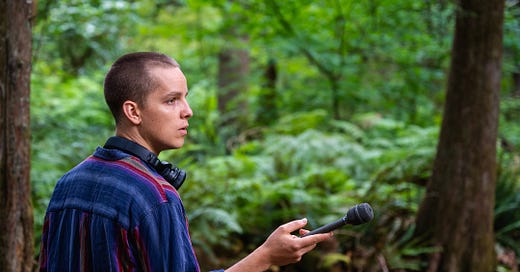



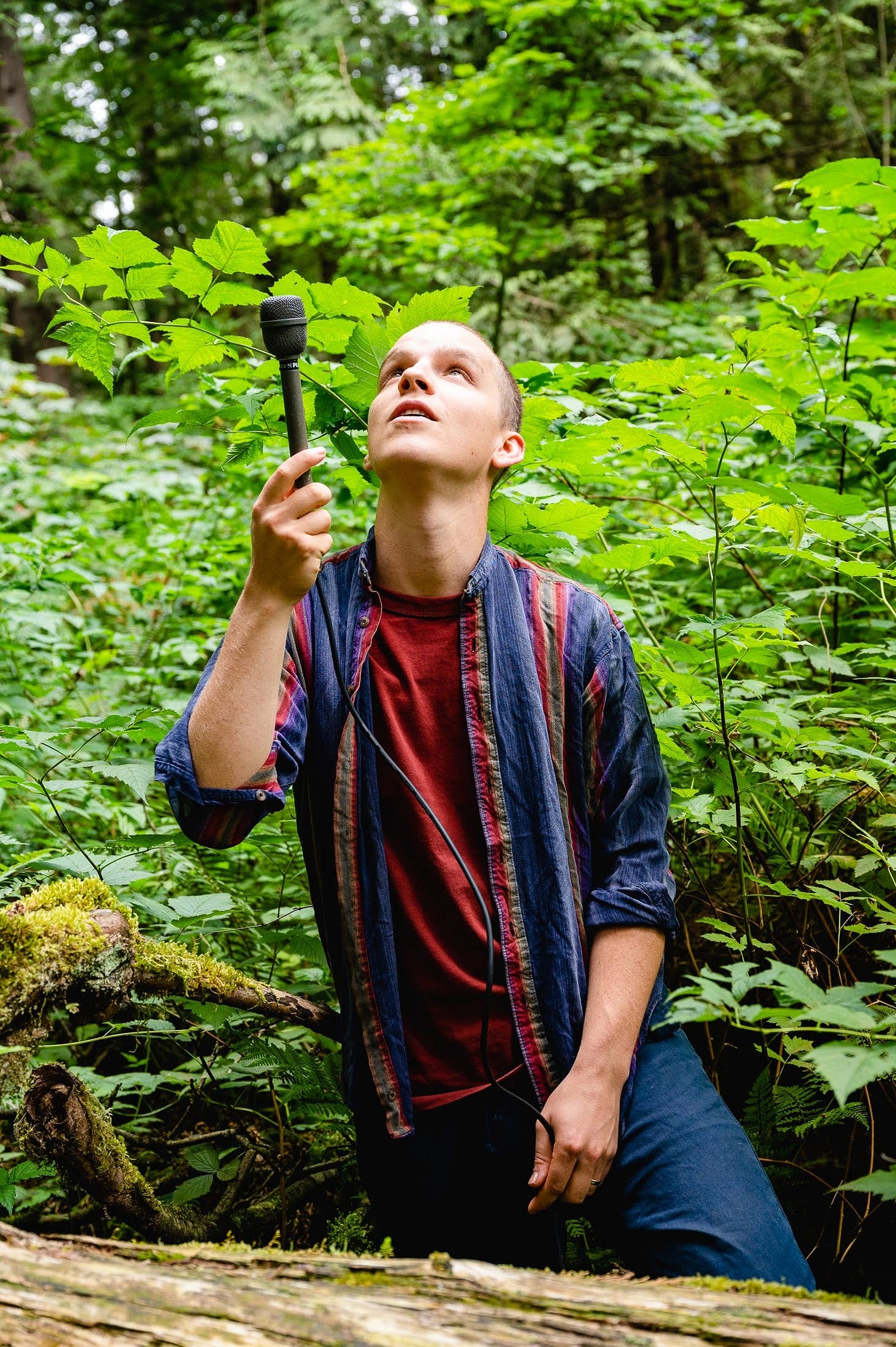

Oh man, love this convo! Can't get any better than two beautiful artists talkin' shop (and by shop, I mean of course the deep ocean and vast beach of inspiration and faith and beauty and dreams)
Yes! Keep doing this. And good first pick! Simon Bridgefoot: best roommate ever.